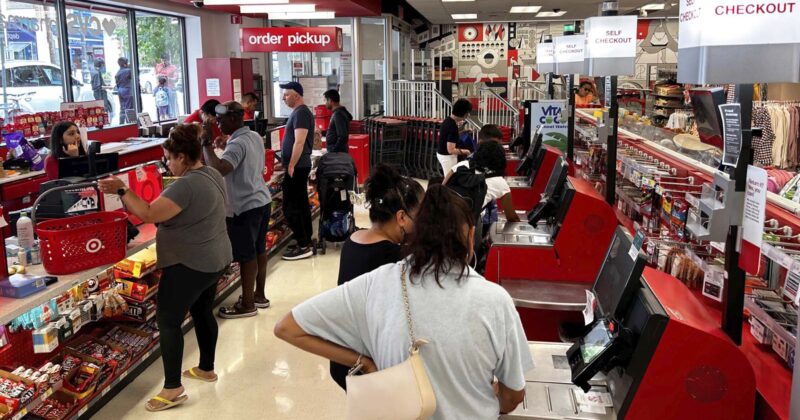Target is scaling back its use of self-checkout kiosks across its nearly 2,000 US stores, reversing a previous strategy due rising concerns over theft.
The company had announced plans last March to expand self-checkout across all locations. However, it has since quietly removed kiosks from certain stores, shut them down in others, or imposed strict item limits such as capping self-checkout use to 10 items or less.
Target is not alone in this decision; similar retailers, including Walmart, have pulled back on self-checkouts and restored more traditional cashier-staffed lanes in the last year over shoplifting concerns.
While Target cited a shift in consumer preferences away from self-checkout after the COVID-19 pandemic, the decision also coincides with increasing concerns about retail theft.
According to the New York Post, a recent incident took place in California in which a thief used Target’s self-checkout kiosks to steal over $60,000 worth of merchandise in a shoplifting spree that saw 100 visits to the retailer.
“Target’s self-checkout policy has been through a lot of changes and has caused frustration for customers,” GlobalData retail expert Neil Saunders told The Daily Mail.
“The problem with Target is a lot of decisions are being taken centrally without proper thought about what they mean on the ground.”
Target has been vocal over the past few years about organized retail theft and its impact on the company’s profitability.
In 2024, the company installed AI-powered surveillance cameras at self-checkout stations designed to monitor transactions and detect items not scanned by customers.
CEO Brian Cornell has repeatedly raised concerns about theft, calling it a growing problem for the company.
In 2023, Target reported millions of dollars in losses due to stolen merchandise, prompting stores to lock high-theft products behind glass doors.

